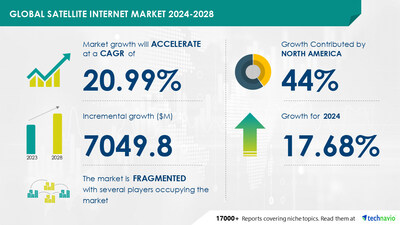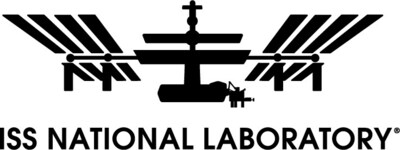DEEP® Announces Mission #OccupyMare: to Make Humanity Aquatic
The Era of a Permanent, Continuous Human Presence Underwater Begins
Secretive Firm Surfaces Next Generation Sentinel® Habitats Built to Understand and Safeguard Earth’s Ocean
LONDON, Oct. 18, 2023 /PRNewswire/ — On Monday the 2nd of November 2000, in silent orbit four hundred kilometers above the surface of the planet, one American astronaut and two Russian cosmonauts docked their vessel Expedition 1 to the International Space Station. From that day almost twenty-three years ago, there has been a continuous, uninterrupted human presence in space.
On that day, humanity became extra-planetary and has never looked back.
Today, the oceanic exploration and technology organization DEEP® (www.deep.com) surfaced and, after more than two-years in stealth, announced its #OccupyMare mission: to Make Humanity Aquatic.
On 03 November 2026 a crew of six fully-trained crew will be deployed to DEEP’s newly unveiled Sentinel® oceanic habitat system, beginning the era of humanity’s continuous presence underwater. That day will go down in history as the day our species went to the ocean, and never looked back.
This is the vision of DEEP: our species becoming a natural part of the oceanic biomes and environments, developing a deeper understanding and wisdom, and co-existing sustainably with a thriving ocean. For more than two years DEEP’s design, research, and engineering efforts have been underway, working in strict secrecy from its dedicated engineering center in Bristol, United Kingdom. Over a hundred and thirty engineering, design, diving and medical professionals are working globally to realize DEEP’s mission to Make Humanity Aquatic.
DEEP’s ground-breaking Sentinel® habitat system is deployable anywhere on the planet’s continental shelf and operates at ambient pressure in depths of up to 200m. The system is engineered to be modular and reconfigurable, with the smallest configuration allowing for rotating crews of six, who live and work continuously in the habitat for 28 days before cycling back to the surface. The system’s fundamental modularity allows Sentinels to be recovered, reconfigured, upgraded, and redeployed on different missions and in different locations over the course of their operating lives.
“The Sentinel platform is not a product, it is a system, comprising the Sentinel habitat itself, of course, but also the next generation of DEEP submersibles, suits and a holistic training and safety operating system developed and delivered through the DEEP Institute at our Campus” notes Steve Etherton, President (EMEA). “While the Sentinel system is undeniably ground-breaking, it represents only a first step in building a robust organization to enable deeper understanding of the ocean. NASA is not a rocket manufacturer, and likewise DEEP is not only a Sentinel manufacturer.”
There have been numerous habitat systems developed by nation states, military organizations, and private enterprises in the past. Now DEEP has brought together the latest developments in materials science, human factors and dive medicine, design and engineering, and additive manufacturing, all of which make possible for the first time quantum leaps forward in four core areas of habitat feasibility: safety; autonomy; modularity/reconfigurability; and habitability.
“DEEP is leading the way in development and expansion of novel approaches for a sustained intersection of deep-sea and humanity. As has been demonstrated through a continuous presence in space, time and exposure to a unique environment has led to significant breakthroughs in science, engineering, and thirst to extend our reach beyond our planet. Similar to those that established a human space residency, DEEP is creating a future where a continuous sea presence will drive the expansion of subsea research and exploration, preservation, and an improved understanding of our interconnection with our ocean,” says Dawn Kernagis PhD, NASA crew member for the NEEMO XXII undersea mission, Vice Chair for Neurosurgery Research at the University of North Carolina, Explorers Club Fellow, and first recipient of US Office of Naval Research Undersea Medicine Program’s Predoctoral Award. Dr Kernagis’ team currently conducts advanced research for a number of organizations, including the United States Department of Defense and NASA.
Following two years of intensive and pioneering research into cutting-edged advanced manufacturing processes and materials science, including the design of the largest WAAM 3D manufacturing capability in Europe, DEEP has received design approval in principle from DNV, one of the world’s foremost certification and classing authorities. “The Sentinel system is not theoretical, nor is it just renderings marketed to help raise capital or generate interest – we are already well into advanced engineering and approval. Manufacturing has already begun,” says Michael Shackleford, DEEP’s President (Global Infrastructure).
“I support DEEP’s mission and look to them to become the voice and leader in undersea living, education and exploration, because the ocean has no voice of her own,” says Ian Koblick the world-renowned ocean explorer and ‘Aquanaut’ who designed and operated the most advanced subsea habitat and laboratory in the world (“La Chalupa”), and co-author of Living and Working in the Sea, the definitive book on the history of saturation diving and underwater habitats.
“It has been unbelievably gratifying to see the incredible interest in the Sentinel system as we have slowly introduced it under confidentiality restrictions to key potential partners and stakeholders. It has happened so fast,” says Sean Wolpert, DEEP’s President (Americas). ” There has been no need whatsoever to ‘pitch’ anything. To governments and to national and international organizations that already appreciate the nature and complexity of the constraints to continuous underwater presence, the immense potential of the Sentinel system is seen and understood instantly. And, of course, the incredible opportunities for advanced oceanographic and climate research, drug discovery, food security and even marine archaeology. Finally, the global community is waking to the monumental risks associated with remaining ignorant about our ocean, which is at the core of the planetary challenges relating to climate, carbon and biodiversity. Some nation will go first and will establish itself as the prime mover in this new era; that is very clear. We are in active discussions with several incredible partners and hope to be able to share more very soon.”
“Most companies exist to make a profit,” says Dr. John R. Clarke, Ph.D., the Scientific Director of the U.S. Navy Experimental Diving Unit (NEDU) from 1991 until 2018, and who has worked for the U.S. Assistant Secretary of Defense for Strategy, as well as various companies. “They ask why? when daring concepts are proposed. They are risk-averse. Too few companies ask why not? Those that do – like SpaceX – tend to be the great ones. In my opinion, DEEP is one such company.”
Press Resources
A media pack of illustrations and video is available to download here:
Transfer – Dropbox
About DEEP®
Headquartered in the United Kingdom and operating globally DEEP® is an oceanic exploration and technology organization whose Mission is to Make Humanity Aquatic. The ocean, while 72% of the surface of the planet, represent over 99% of the three-dimensional habitat of Earth, are the cradle of her biodiversity and the critical core of the climate system. However, the greatest long-term threat to the ocean is not plastic, nor shipping, nor pollution – it is ignorance. The keystone of DEEP’s solution is the Sentinel® habitat platform, a patent-pending system of standardized modules, which can be assembled and deployed in an infinite number of configurations at depths of up to 200m anywhere on the planet’s continental shelf. From a six-crew research platform studying reef remediation for a year-long deployment, to a full semi-permanent subsea colony, the ambient pressure Sentinel system provides humanity with a scalable means of accessing these environments, making possible in days or weeks research that would take years using traditional dive and submersible techniques. In addition, the next generation of dedicated, robust DEEP research and expedition submersibles interface with the Sentinel habitats directly, and the DEEP Institute curriculum constitutes a complete diving, safety and habitat operating system to ensure the safety and effectiveness of both crew and specialists once deployed. The DEEP Campus, based in the West of the United Kingdom, is the largest controlled-water facility dedicated to marine engineering, exploration, and research on the planet.
DEEP and the DEEP logo are registered trademarks, and Sentinel and Engineering Wonder are trademarks, of DEEP. All rights reserved.
![]() View original content:https://www.prnewswire.com/news-releases/deep-announces-mission-occupymare-to-make-humanity-aquatic-301960483.html
View original content:https://www.prnewswire.com/news-releases/deep-announces-mission-occupymare-to-make-humanity-aquatic-301960483.html
SOURCE DEEP


 Private Internet Access gives you unparalleled access to thousands
of next-gen servers in over 83 countries and each US state. Your
VPN experience will always be fast, smooth, and reliable.
Private Internet Access gives you unparalleled access to thousands
of next-gen servers in over 83 countries and each US state. Your
VPN experience will always be fast, smooth, and reliable.

